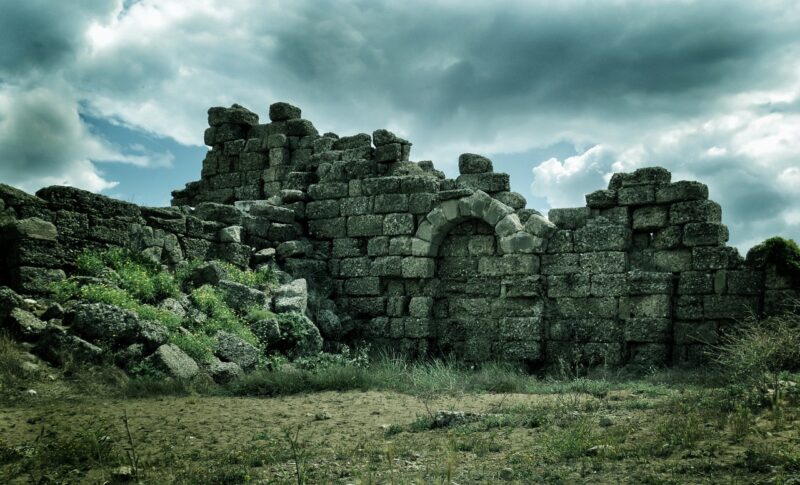The Most Mysterious Ruins Ever Discovered That Continue to Baffle Historians and Archaeologists
November 17, 2024

Throughout history, humanity has built incredible civilizations and monuments that tell stories of our past. However, some ruins continue to baffle historians and archaeologists, leaving them to ponder the secrets and mysteries they hold. These mysterious sites challenge our understanding of ancient cultures, architecture, and practices. In this article, we explore some of the most enigmatic ruins that still captivate our imagination and spark intense research and debate.
1. The Great Pyramids of Giza
The Great Pyramids of Giza are among the most iconic structures in the world. Built over 4,500 years ago, they served as tombs for pharaohs, but their construction continues to perplex experts. Did you know that the precision with which the pyramids were built is astounding? The alignment of the pyramids closely mirrors cardinal points, and the materials used suggest intricate planning and organization.
One mystery surrounding the pyramids is the exact methods used for their construction. Theories abound, ranging from the use of ramps to advanced machinery that may have existed in ancient Egypt, but no consensus has been reached. Additionally, the purpose of the elaborate burial chambers and their contents offers a rich field for exploration, as it prompts questions about ancient Egyptian beliefs in the afterlife.
2. Stonehenge
Located in Wiltshire, England, Stonehenge is a prehistoric monument that has baffled scholars for centuries. The arrangement of massive stones, some weighing over 25 tons, raises questions about the techniques used to transport and construct such an extraordinary site without modern machinery. Theories about its purpose vary widely, suggesting it might have been an astronomical observatory, a religious site, or even a burial ground.
Moreover, the precise alignment of Stonehenge with the solstices adds another layer of intrigue, hinting at sophisticated astronomical knowledge among its creators. Despite countless studies, much about Stonehenge remains elusive – including who exactly built it and for what purpose.
3. Machu Picchu
Nestled high in the Andes of Peru, Machu Picchu stands as a remarkable feat of engineering and craftsmanship. Built by the Incas in the 15th century, this ancient citadel is famed for its dry-stone construction, which has exhibited remarkable resilience against earthquakes. Yet, the exact function of Machu Picchu remains subjects of debate among archaeologists. Was it a royal estate, a religious site, or an astronomical observatory?
The sophistication in its agricultural terraces, water fountains, and ritual sites suggests it held significant social and ceremonial importance. Despite being a popular tourist destination, much of Machu Picchu’s history, including its abandonment – occurring during the Spanish conquest – is still shrouded in mystery.
4. Gobekli Tepe
Dating back at least 11,000 years, Gobekli Tepe in Turkey has fundamentally changed our understanding of early human civilization. Consisting of massive stone pillars arranged in circular formations, it predates Stonehenge by several millennia and is considered one of the world’s oldest known temples.
One of the mysteries surrounding Göbekli Tepe is its purpose. Some archaeologists theorize that it was a ritual site related to ancient hunter-gatherer societies, contradicting our traditional views that organized religion developed after the advent of agriculture. The intricacy of the carvings and the monumental scale of the construction suggest highly developed social structures and motivations that were previously believed to be impossible at such an early stage in human history.
5. Easter Island (Rapa Nui)
Easter Island is famous for its colossal stone statues called moai, which depict the faces of ancestral figures. The moai are spread across the island, and their construction poses questions about the society that created them. How did the Rapa Nui people transport these massive statues, some weighing over 80 tons, across the island? Theories include the use of logs, sleds, and even a method involving walking the statues upright.
Additionally, the mystery remains regarding why the Rapa Nui society collapsed after moving the statues, which has led to debates about environmental impacts and social dynamics. The interconnectedness of culture, societal change, and ecological awareness emerges vividly through the examination of Easter Island and its moai.
6. Teotihuacan
Teotihuacan, located near modern-day Mexico City, flourished between 100 BC and 750 AD. The name translates to “the place where gods were created,” and it remains one of the largest and most influential urban centers of the ancient world. The city is famous for its massive pyramids, including the Pyramid of the Sun and the Pyramid of the Moon, but many questions about its inhabitants, culture, and eventual decline remain unanswered.
Little is known about the people who built Teotihuacan, as their written language has not been deciphered, and records of their lives have largely been lost. It’s still debated whether Teotihuacan was a capital city or merely a ceremonial site. The mysterious disappearance of its inhabitants also continues to spur research and investigations into the social dynamics of this ancient civilization.
7. The Nazca Lines
The Nazca Lines are an extensive network of geoglyphs etched into the ground of the Nazca Desert in Peru, dating back to around 500 BC. These massive drawings depict various animals, plants, and geometric shapes, stretching across miles of desert. However, the purpose behind these intriguing figures remains a topic of speculation.
Some scholars believe they served as astronomical calendars or religious pathways, while others think they were intended to be seen from above, perhaps by gods or extraterrestrial beings. The movements of ancient people in relation to the lines provide insights into their cultural beliefs and practices, yet much about their significance remains obscure.
Conclusion
The mysteries of ancient ruins tell us that history is layered with unanswered questions and secrets waiting to be uncovered. As advancements in archaeology, technology, and research continue to progress, so too does our understanding of these captivating sites. While definitive answers may be elusive, each exploration brings us closer to unlocking the enigmatic tales of human civilization.
From the monumental pyramids of Egypt to the ancient drawings of Peru, the quest to understand these mysterious sites enhances our appreciation of the rich tapestry of history.
🌀 What do you believe is the biggest mystery of these ruins? Let us know your thoughts in the comments below!







